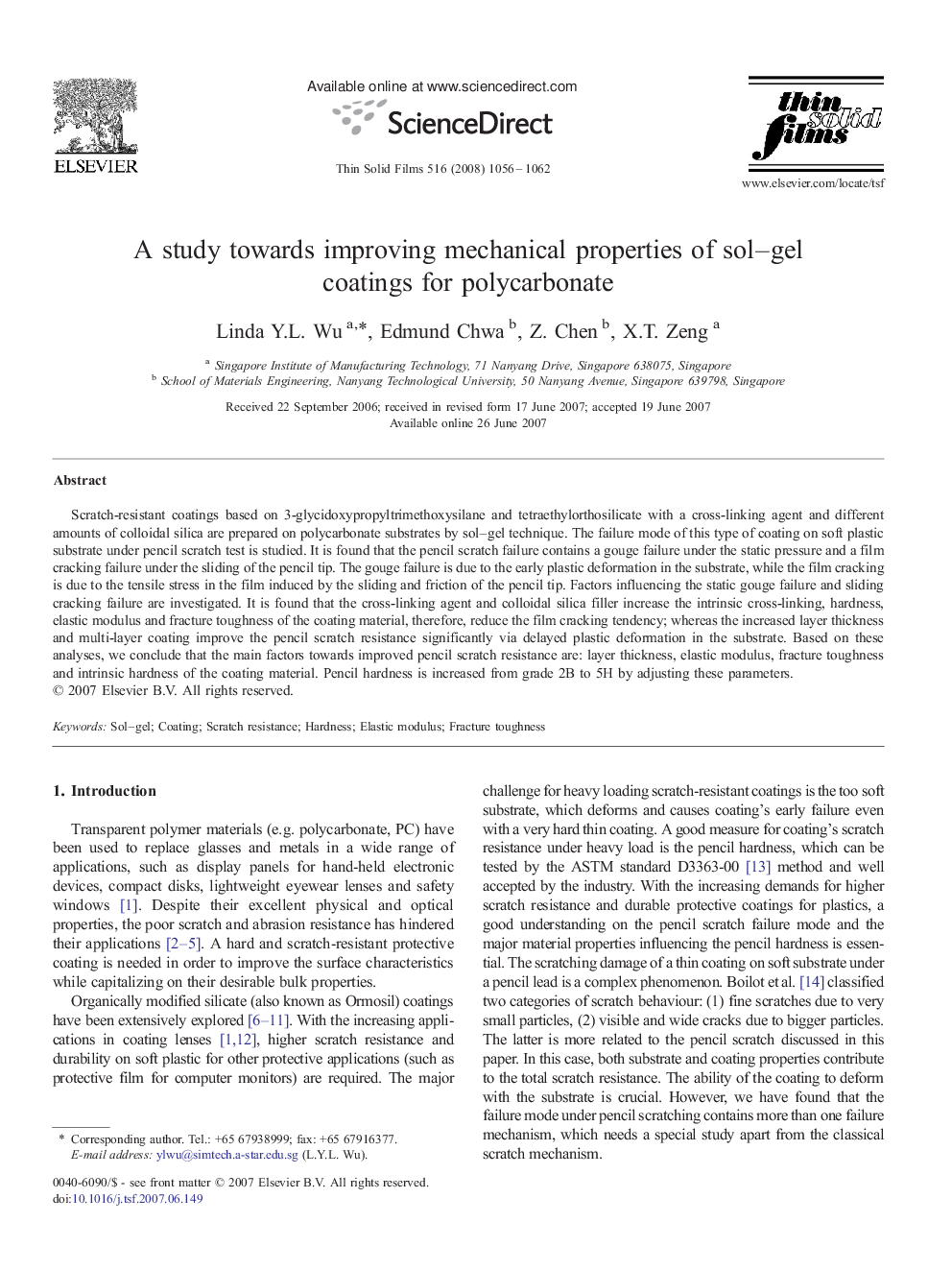| Article ID | Journal | Published Year | Pages | File Type |
|---|---|---|---|---|
| 1675765 | Thin Solid Films | 2008 | 7 Pages |
Scratch-resistant coatings based on 3-glycidoxypropyltrimethoxysilane and tetraethylorthosilicate with a cross-linking agent and different amounts of colloidal silica are prepared on polycarbonate substrates by sol–gel technique. The failure mode of this type of coating on soft plastic substrate under pencil scratch test is studied. It is found that the pencil scratch failure contains a gouge failure under the static pressure and a film cracking failure under the sliding of the pencil tip. The gouge failure is due to the early plastic deformation in the substrate, while the film cracking is due to the tensile stress in the film induced by the sliding and friction of the pencil tip. Factors influencing the static gouge failure and sliding cracking failure are investigated. It is found that the cross-linking agent and colloidal silica filler increase the intrinsic cross-linking, hardness, elastic modulus and fracture toughness of the coating material, therefore, reduce the film cracking tendency; whereas the increased layer thickness and multi-layer coating improve the pencil scratch resistance significantly via delayed plastic deformation in the substrate. Based on these analyses, we conclude that the main factors towards improved pencil scratch resistance are: layer thickness, elastic modulus, fracture toughness and intrinsic hardness of the coating material. Pencil hardness is increased from grade 2B to 5H by adjusting these parameters.
